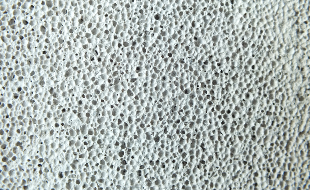Information relating to our knowledge of Reinforced Aerated Autoclaved Concrete (RAAC) within public buildings in Perth and Kinross.

Known cases of RAAC within our buildings
RAAC was identified in one of our secondary schools, Perth Grammar School, in late February 2023. Immediate safety measures were put in place to ensure the safety of all building users and a programme of works were commissioned to safely remove all RAAC materials over the summer holiday period. All RAAC has now been removed from the building and replaced with a steel profile roof.
Condition surveys on Bell's Sports Centre in autumn 2023 identified the presence of RAAC in parts of the original structure. Impacted areas are closed off for public access and with the agreement of Council in May 2024 to the Live Active Leisure request to withdraw delivery of services from Bell's from August 2024, addressing the RAAC within the building will be undertaken as part of establishing the future of the site.
Frequently Asked Questions about RAAC
What is RAAC and why is it used in buildings?
Reinforced autoclaved aerated concrete (RAAC) is a lightweight construction material that was used in the construction of some public buildings like schools and hospitals between the 1950s and 1990s. It was used mostly in flat roofing, but also in some pitched roofs, floors and walls.
It was quicker to produce, easier to install, and cheaper than standard concrete. Despite its name, it is very different to traditional concrete although it looks similar. It is aerated, or 'bubbly', and is therefore less durable than traditional concrete.
Why is there a risk?
RAAC can be susceptible to failure when exposed to moisture. The 'bubbles' can allow water to enter the material. This moisture can also cause decay in any reinforcement steel ('rebar') present in the material.
In February 2022, a report was published by Institute of Structural Engineers RAAC Group following an incident in England in 2018 and an initial safety alert in 2019. Guidance was published by the group in April 2023.
What steps has the council taken?
Following the initial safety alert in 2019 we proactively carried out a review of existing building condition information which was followed up with non-invasive visual inspections where required. No buildings were identified as containing RAAC at that time.
Across the Council's estate we have a robust Building Condition Survey programme in place and this aligns with the guidance contained in the Scottish Government Core Facts (as amended in November 2017). This comprises a 5-year rolling survey programme and also includes for an annual review of survey data to monitor for any changes in asset condition and building improvements carried out. It was as part of this more detailed survey programme that RAAC was identified within Perth Grammar and immediate action was taken. We have continued to monitor for RAAC in buildings as work is carried out and it is as a result of condition surveys undertaken that it was discovered in parts of the original Bell's Sports Centre structure in autumn 2023.
Is council housing affected?
Our housing team has carried out a desktop assessment based on the age of the property and the house type. Based on this assessment we are confident that none of the housing stock will have been constructed from this material.
For further assurance contractors onsite as part of the multi-storey upgrade have also carried out a check for RAAC and none has been identified.
Are private and commercial buildings affected?
The Institution of Structural Engineering advises that any private owner with properties constructed between the mid-1950s and mid-1990s should conduct a survey of the building to identify or eliminate the possibility of RAAC within the fabric where necessary and assess whether remedial work is required.
What is the council planning to do next?
We continually assess new information and research about RAAC to ensure the safety of our building users. Recently identified new cases of RAAC within schools in England has led to a change in approach to the assessment process for identifying RAAC.
We have been proactive with our approach to assessing for the presence of RAAC. We continue to review all building condition and asset information for our property estate taking into account any new information and research around RAAC. Officers from the Scottish Heads of Property network are continuing to liaise with Scottish Government on the approach to be adopted to any further inspections and assessment of the public sector estate. We will take action to follow any further advice which emerges from those discussions.




